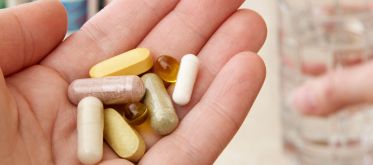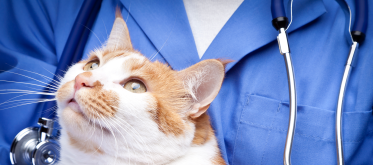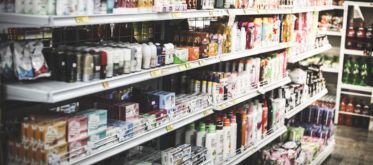
Monitoring and raising the alert
ANSES takes part in several national schemes that enable it to detect warning signals and take effective action against diseases and harmful exposure.
Monitoring, surveillance, vigilance, alert: what is the difference?
- Health monitoring seeks to detect the occurrence of an unusual or abnormal event that may pose a risk to human, animal or plant health, with a view to anticipation, alert and early action.
- Surveillance entails the systematic and continuous collection of data for a defined scope, as well as their analysis, interpretation and distribution, with a view to assisting with decision-making.
- A vigilance scheme is a system for collecting information to help detect adverse effects associated with the use of specific products or materials.
- A health alert is defined as a sufficiently validated signal where it was decided, after an initial risk assessment, that there is a significant probability that it poses a threat to a population's health and requires an appropriate response
All the data collected by these schemes are invaluable for the risk assessments conducted by the Agency.
The vigilance schemes
ANSES coordinates seven vigilance schemes, which were set up to detect adverse effects on health or the environment following exposure to a product or food.
These schemes are based on voluntary reports from consumers, healthcare professionals or industry.
Assessment of the reports can lead to an alert being triggered and preventive measures being taken to better protect workers and consumers.
- Nutrivigilance aims to quickly identify possible adverse effects related to the consumption of food supplements, fortified foods or novel foods.
- Toxicovigilance monitors toxic effects on humans, whether acute or chronic, following exposure to natural or synthetic substances or substance mixtures available on the market or present in the environment. This scheme is supported by the network of poison control centres.
- The objective of phytopharmacovigilance is to document the presence of plant protection product residues in different media (including food) and identify adverse effects on human, animal or environmental health associated with their use.
- Veterinary pharmacovigilance monitors the side effects of veterinary medicines on the health of treated animals, veterinarians and individuals, as well as on the environment and food, after these products have been placed on the market.
- The objective of the National network for monitoring and prevention of occupational diseases (RNV3P) is to identify risk situations in the workplace on the basis of data from consultations carried out at the 28 occupational and environmental disease consultation centres (PDF).
- The aim of cosmetovigilance is to identify undesirable effects in humans associated with the use of cosmetics
- The goal of tattoovigilance is to monitor the undesirable effects caused by the use of tattoo products
The vigilance schemes we manage are very different in terms of their objectives and the networks of experts they mobilise. They cannot exist without the professionals who record the data: doctors, veterinarians, researchers, etc. These schemes all complement each other and enable us to remain alert so that nothing is overlooked and we can respond when necessary.

Surveillance activities
ANSES carries out several surveillance activities to monitor the development of diseases and pathogens, and to detect the emergence of new risks in animals, plants and food.
National epidemiological surveillance platforms
ANSES is involved in the three epidemiological surveillance platforms dedicated respectively to animal health, plant health and food-chain surveillance. They involve both public and private partners. ANSES's laboratories are represented in the coordination teams, cross-functional operational teams and the numerous working groups.
Find out more about the epidemiological surveillance platform for animal health
Find out more about the epidemiological surveillance platform for plant health
Find out more about food-chain surveillance
Coordinator of surveillance networks
ANSES coordinates several epidemiological surveillance networks that rely on specialists in the field, including laboratories, veterinary practitioners, physicians, health and technical organisations, breeders, specialists on particular animal species, etc.
- RESAPATH: this network, created in 1982, monitors the development of antimicrobial resistance in pathogenic bacteria that cause infections in animals. It is coordinated by ANSES's Lyon and Ploufragan-Plouzané-Niort laboratories. RESAPATH mobilises 74 laboratories in 99 départements and collects data on resistance for over 50,000 strains of bacteria each year;
- SALMONELLA: set up in 1997, this network focuses on Salmonella of non-human origin throughout the entire food chain. It is coordinated by ANSES's Laboratory for Food Safety. This network comprises nearly 150 private and public veterinary laboratories covering 94 French départements;
- VIGIMYC: this network was created in 2003. It monitors the circulation of different species of mycoplasma, a type of bacteria responsible for disease. It includes 35 partner laboratories and is run by ANSES's Lyon Laboratory. Isolated strains are added to its collection and used for research and development purposes, as well as more recently for assessing their susceptibility to antibiotics;
- RNOEA: created in 1987, this national network for epidemiological observation in poultry farming is coordinated by ANSES’s Ploufragan-Plouzané-Niort Laboratory. Its 55 participants (veterinarians working in laboratories, private practice and employed by companies) send the observations they make while carrying out their work. The data they provide are the only epidemiological information available on the diseases found in French poultry farms.
Support for monitoring plans
ANSES provides scientific and technical support for designing monitoring plans and in so doing contributes to the excellence of the checks performed by the State each year. In particular, it proposes control and monitoring priorities to generate the data needed for effective risk assessment. It also provides guidance on the surveillance methods to use for ensuring the relevance and reliability of the data collected.
Focus on monitoring the nutritional quality of food
- The Food Observatory (OQALI): created in 2008, it is run by ANSES jointly with INRAE. Its task is to monitor the supply of processed food products on the French market by measuring changes in nutritional composition and the information available on the labels. With more than 48,000 products listed (for example, biscuits, cereals, fruit compotes, ready meals and dairy products), it publishes annual reports by food sector and specific studies on the relationships between quality, price and consumption, or on the impact of nutritional policies.
- CIQUAL: created in 1985, the database on the nutritional composition of foods in France is managed by ANSES. It is a reference source of information for healthcare professionals and is available online free of charge. It is one of the most comprehensive tables in Europe, providing the fat, fatty acid, carbohydrate, sugar, protein, salt, vitamin and mineral content of over 3000 foods.





